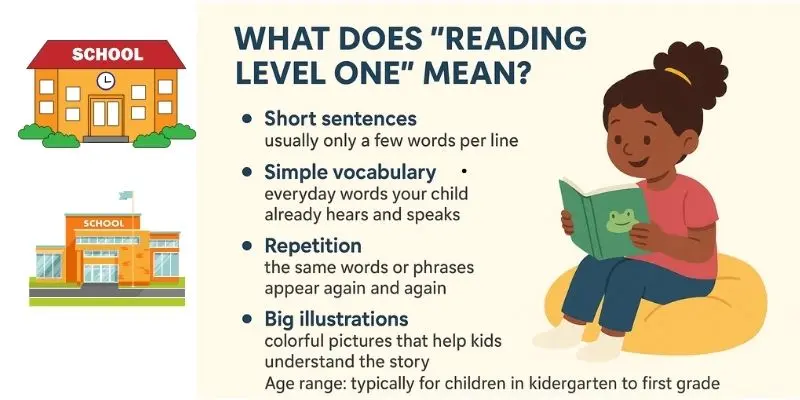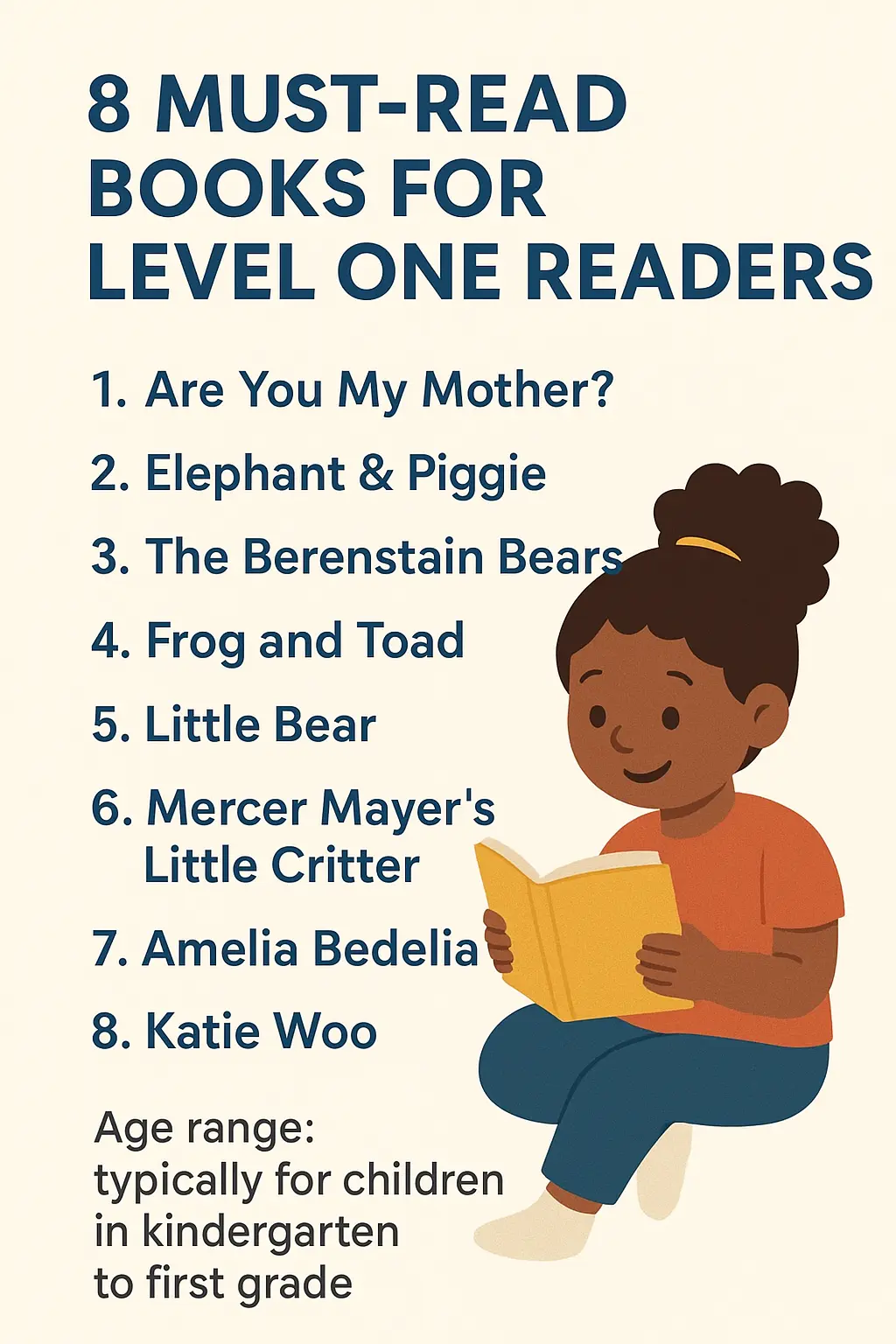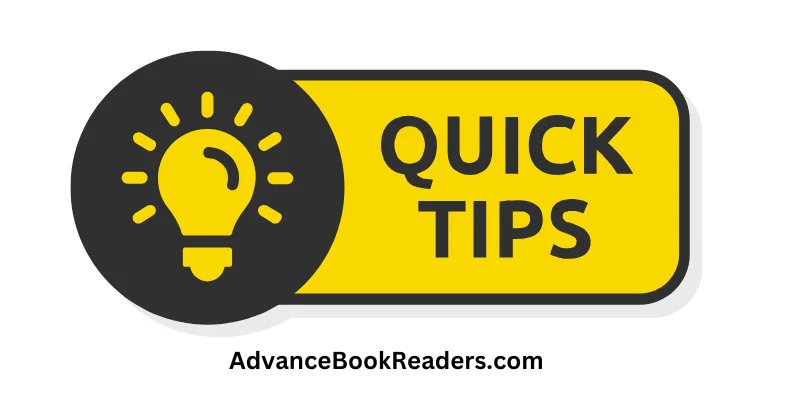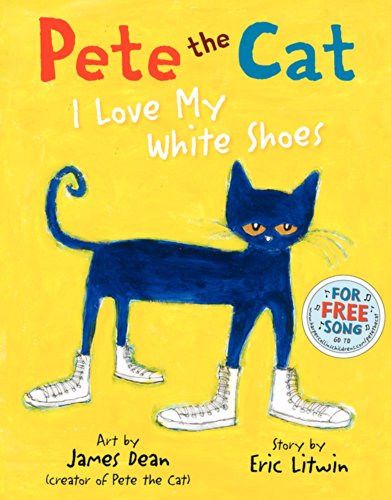Best Reading Level One Books for Beginners: A Guide For Parents And Teachers
Updated: 08 Aug 2025
110
When your child first starts reading, it feels both exciting and overwhelming. You want to give them the right books—the ones that make them smile, keep them turning pages, and most importantly, build their confidence as new readers. But with so many options out there, it’s easy to wonder: Which Level One books are truly worth it?
That’s where this guide comes in. We’ve put together a list of must-read Reading Level One books that parents, teachers, and kids all love. These aren’t just any beginner books—they’re fun, simple, and perfect for little readers who are taking their very first steps into independent reading.
In this post, you’ll learn what makes a Level One book, why they’re so important for early literacy, and discover some of the best titles that kids actually enjoy. From timeless classics to modern favorites, this curated list will save you time, ease your worries, and help your child fall in love with reading.
Let’s dive into the world of Level One books and find the perfect stories to spark joy and confidence in your young reader.
What Does “Reading Level One” Mean?
If you’re new to the world of children’s books, the term “Reading Level One” can feel a bit confusing. In simple words, these books are designed for emergent readers—kids who are just starting to recognize words and put together short sentences.

Here’s what you’ll usually find in a Level One book:
- Short sentences – usually only a few words per line.
- Simple vocabulary – everyday words your child already hears and speaks.
- Repetition – the same words or phrases appear again and again to build recognition.
- Big illustrations – colorful pictures that help kids understand the story.
- Age range – typically for children in kindergarten to first grade (around 5–7 years old).
Different publishers may label Level One slightly differently (like Step Into Reading or I Can Read!), but the goal is always the same: making the first steps of independent reading fun and manageable.
Why Start with Level One Books?
Early readers need a strong foundation, and Level One books provide exactly that. They are carefully designed to help children feel successful as they learn to read.
Benefits of Level One Books
- Builds confidence – kids feel proud when they can finish a book by themselves.
- Introduces sight words – common words like the, and, said become familiar.
- Encourages independent reading – children start turning pages without constant help.
- Makes reading enjoyable – fun characters and simple plots keep them engaged.
Why Parents and Teachers Love Them
- They’re short enough for quick reading sessions.
- They support phonics and early literacy skills.
- They make reading less overwhelming and more exciting for beginners.
In short, Level One books are more than just simple stories—they’re confidence boosters that set the stage for a lifelong love of reading.
Features of a Good Level One Book
Not all Level One books are created equal. Some are too dull, while others might be too tricky for beginners. So, what makes a good Level One book?
Here are the key features to look for:
1. Simple Sentences
- Sentences should be short and easy to follow.
- Words are usually one or two syllables, so kids don’t get stuck.
2. Repetition of Words
- Repeated words help children recognize them faster.
- Builds reading fluency and confidence.
3. Colorful Illustrations
- Pictures support the text and give clues about the story.
- Visuals keep kids engaged, even when the text is short.
4. Fun and Relatable Stories
- Themes like animals, school, or friendship spark curiosity.
- Children are more likely to reread a book they enjoy.
5. Age-Appropriate Vocabulary
- Words should match the child’s speaking level.
- Avoid books with complex words that may frustrate beginners.
A strong Level One book should feel like a gentle step into reading, not a challenge that discourages your child.
Must Read Classic Level One Books
Some books stand the test of time because children (and parents) love them year after year. These classic Level One books are must-haves for every beginner’s bookshelf:

- “Are You My Mother?” by P.D. Eastman
A sweet and funny story about a baby bird searching for its mother. Simple words and charming illustrations make it unforgettable.
- “Put Me in the Zoo” by Robert Lopshire
A playful tale about a spotted creature who wants to belong in the zoo. The repetition and silly fun are perfect for new readers. - “Danny and the Dinosaur” by Syd Hoff
This story of friendship between a boy and a dinosaur has been loved for generations. Short sentences and simple words make it ideal for Level One readers. - “Little Bear” by Else Holmelund Minarik
Gentle stories about Little Bear and his family that are easy to read and full of warmth.
These classics are not only easy to read but also engaging enough to keep kids coming back again and again.
Modern & Fun Level One Books Kids Love
While classics are timeless, today’s kids also love fun, modern stories that reflect their world. These books keep reading exciting and fresh for new readers:
- “Elephant & Piggie” series by Mo Willems
Short sentences, hilarious expressions, and simple dialogue make this series a top favorite. Kids laugh while learning to read. - “Pete the Cat: Play Ball!” by James Dean
Pete’s cool, laid-back adventures are easy to follow and filled with positive messages. Perfect for sports-loving little ones. - “Fly Guy” series by Tedd Arnold
Silly, fun, and full of energy—this series mixes simple words with big illustrations that kids adore. - “Henry and Mudge” by Cynthia Rylant
A heartwarming series about a boy and his dog. The stories are simple yet meaningful, great for early readers.
These modern books show kids that reading can be funny, cool, and relatable—not just a school activity.
Level One Book Series Worth Exploring
Sometimes one book isn’t enough. That’s where series come in. Series give children familiar characters, predictable patterns, and consistent reading levels that help build confidence.
Popular Level One Series:
- I Can Read! Level 1
A trusted series covering everything from classic stories to superheroes. Great variety for different interests. - Step Into Reading Level 1
Divided into levels, with Level 1 focusing on short sentences and strong picture support. Covers fun topics like Disney, animals, and fairy tales. - Scholastic Reader Level 1
A mix of fiction and nonfiction. Perfect for kids who love facts about animals, space, and the real world. - Hello Reader! Level 1
Short, simple books that often come with humor and colorful illustrations.
Series are a smart choice because they help kids practice with familiar structures while still exploring new adventures.
- Maccarone, Grace
- Lewin, Betsy
Tips for Parents & Teachers When Choosing Level One Books
Picking the right book can make all the difference in how a child feels about reading. Here are some simple tips to guide you:

1. Match Interests
- Choose books based on what your child already loves—animals, superheroes, sports, or fairy tales.
- Kids are more likely to finish books that connect with their hobbies.
2. Stick With Familiar Characters
- Book series give children comfort because they already know the characters and story style.
- This makes each new book easier to read.
3. Look for Repetition
- Books that repeat words and phrases help kids remember and recognize them.
- Repetition builds reading speed and confidence.
4. Don’t Rush the Process
- Some children may want to reread the same book many times.
- That’s actually a good sign—it means they’re building fluency and confidence.
The key is simple: choose books that are fun, not frustrating. When kids enjoy reading, they naturally want to do more of it.
How to Support Early Readers at Home
The right books are just one part of the journey. The way you encourage and support reading at home makes a huge impact too.
Practical Ways to Help Your Child:
- Read together daily – Take turns reading pages or sentences.
- Encourage rereading – Repetition helps children feel more confident.
- Celebrate small wins – Praise your child for finishing a page or a book.
- Create a mini reading corner – A cozy space with books encourages more reading.
- Model reading – Let kids see you enjoying your own books.
When parents and teachers make reading a positive experience, children begin to see it as a joyful habit instead of a task.
Conclusion
Helping a child begin their reading journey can feel like a big responsibility, but it doesn’t have to be overwhelming. By choosing the right Reading Level One books, you’re not just teaching your child words—you’re giving them confidence, imagination, and the joy of storytelling.
From beloved classics like Are You My Mother? to modern favorites like Elephant & Piggie, these must-read books make early reading fun and approachable. They’re filled with short sentences, colorful illustrations, and engaging stories that keep little readers motivated. And when reading feels enjoyable, kids are far more likely to build a lifelong love for books.
As a parent or teacher, your role is to guide and encourage, but also to let kids explore stories that interest them. Every page they turn is a step toward becoming a more confident and independent reader.
So, start small—pick one or two books from this list and read them together. Before you know it, your child will be reaching for books on their own, ready to discover even bigger adventures in the world of reading.
FAQ – Must Read Reading Level One Books
1. What age is best for Level One reading books?
Level One books are usually for children ages 5–7, typically in kindergarten or first grade.
2. Are Level One books the same as kindergarten books?
Not always. Most Level One books fit kindergarten or early first grade, but some may vary slightly by publisher.
3. How many words are in a Level One book?
They usually have 50–250 words spread across short sentences with lots of illustrations.
4. Which series is better: Step Into Reading or I Can Read?
Both are excellent. Step Into Reading has strong picture support, while I Can Read offers a wide range of classic and modern titles.
5. How do I know if my child is ready for Level One books?
If your child can recognize a few sight words and is eager to try reading simple sentences, they’re ready to start Level One books.




Please Write Your Comments